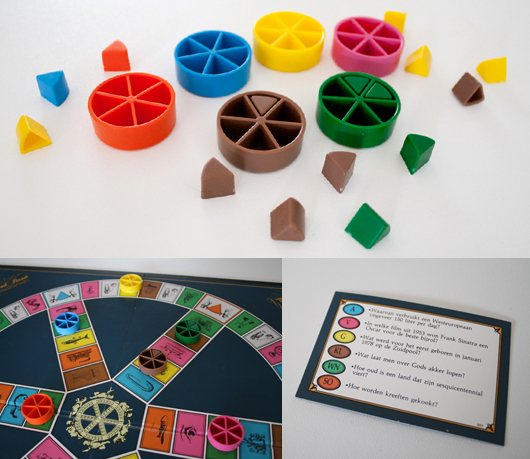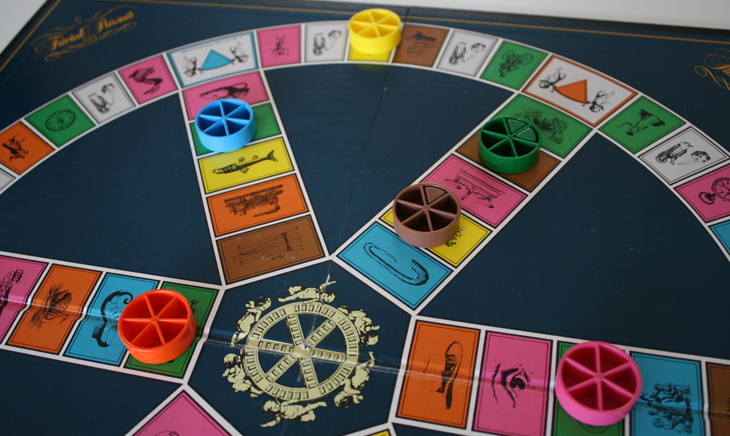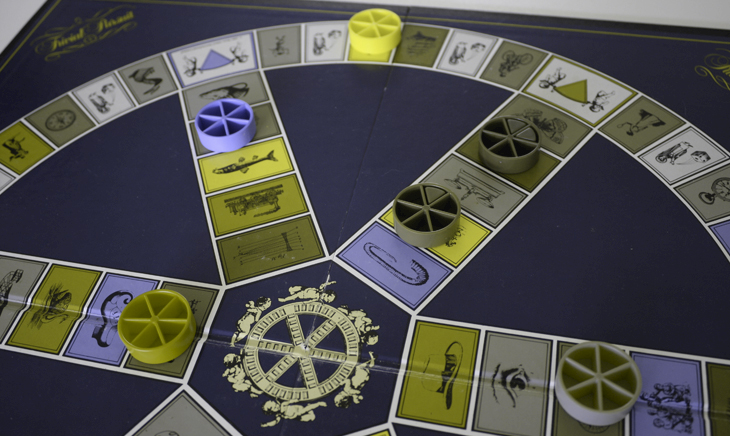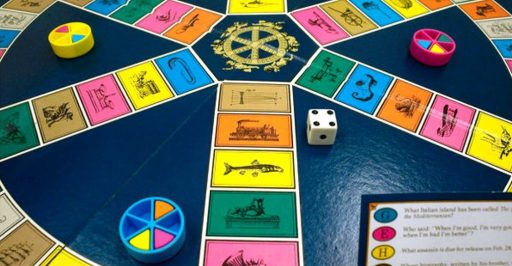Favorite party game for many, Trivial Pursuit combines bad color combinations and confusing usage of color into a nightmare for the colorblind.
Trivial Pursuit is a board game revolving around general knowledge and popular culture questions. Questions are split into six categories, answering a question of a category on a headquarters tile awards the player with a wedge of that category. Scoring a wedge for every category wins you the game.
The game uses 6 colors; green, blue, orange, brown, yellow and pink. These colors are used for these six categories (both on the board and the question cards), the player pieces and the wedges.

The different types of color blindness each have trouble with certain combinations within this color scheme:
| Type of color blindness | Difficult color combinations |
| Deuteran (green) | Green/brown |
| Protan (red) | Brown/green, brown/orange |
| Tritan (blue) | Bue/green, pink/orange |
Player pieces
The playing piece is center of the game, the place on the board limits your options and as such players use it to plan out a strategy and make decisions.
A player that isn’t colorblind does not have to remember where his piece is, he can simply look at the board and know. A colorblind player has to remember where his piece is, when he forgets he has to reevaluate which one is his.


As a result the colorblind player will more than once move the wrong piece, thinking that it was his. Comical at first but tiresome in the long run.
Category colors
The board consists of color-coded category tiles, each color refers to a category. The wedges also correspond to these categories and follow the same color scheme.
The colorblind have trouble linking the color of the tiles to the categories, this poses two problems:
First, the color blind player often has to keep asking what category the tiles are. There is no learnability as the board is composed of too many tiles to remember them all. This gets frustrating very quick.
Second, the player might forget what categories he already has in his player piece as the wedges follow the same confusing color scheme. As a result, a color blind player might go to a category he already has a wedge of, thinking it’s another category.
External influences
Being a party/family game there are often lots of external influences that can influence color perception and memory.
Trivial pursuit is usually played at night, often with low or dim light. Recognizing and telling apart color gets more difficult when it becomes darker as colors tend to blend together, enhancing the effects of color blindness.
Distractions like music and conversation add to the troubles as they distract the colorblind player from his extra tasks. This dampers the learned information like what wedges the player already has won or where his piece is on the board.
Conclusion
The colorblind have trouble telling apart the playing pieces from each other and have trouble linking the color of the question spaces on the board and the colored wedges to their respective categories.
There are no alternative means to differentiate between player pieces, wedges and categories, there is also no way of linking tiles and wedges to categories. And as a result, there is no opportunity to learn the colors as the colorblind have to keep (re)evaluating the colors.
These effects are amplified by added influences like noise and less light, resulting in a very confusing and frustrating experience for both the colorblind and the other players.



